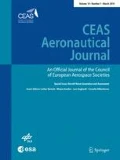Abstract
Modern airplanes need to satisfy rising requirements in terms of functionality and fuel efficiency per passenger. Therefore, an ever-increasing amount of electronics is being integrated in the airplanes either by adding new functionalities or by exchanging mechanical systems by more complex and highly integrated mechatronic ones, optimizing the space, weight and energy used by the airplane infrastructure. Embedded computers are the base of this development and have to perform more and more tasks with at least the same safety characteristics as before. In the last 15 years, different functions traditionally realized in separated devices must be grouped together in one device to limit the ever-increasing number of computers in new airplanes. For safety reasons, this has only been done based on single-core processors up to now: the multi-core technology cannot insure the same level of confidence as single-core controllers—it was mainly invented to gain performance. But the performance of the current single-core processors adequate for embedded and safety–critical applications is limited and, therefore, restricts the grouping of applications. The automotive industry is confronted with similar but still stronger increasing performance challenges. In this sector, the multi-core processors are already considered as the only known solution to fulfill the rising requirements and are, therefore, expected to completely replace single-core processors in a few years. Specific multi-core processor architectures and functionalities improving safety capabilities have recently been developed. The goal of this contribution is to show how the avionics might benefit from using these safety-oriented automotive multi-core processors.










Similar content being viewed by others
Notes
Based on the available information when writing this contribution in 2014.
References
Open Integrated Modular Avionic (IMA): State of the Art and future Development Road Map at Airbus Deutschland. Henning Butz, Airbus Deutschland, Aviation Conferences (2006). http://www.aviation-conferences.com/architecture/pdf/ima-henning-butz.pdf
Partitioning in avionics architectures: requirements, mechanisms, and assurance. NASA/CR-1999-209347, John Rushby, SRI International, Menlo Park (1999)
RTCA/DO-297.: Integrated modular avionics (IMA) development guidance and certification considerations, November 8, RTCA, Inc (2005)
Ramsey J.W.: Integrated modular avionics: less is more. AvionicToday (2007). http://www.aviationtoday.com/av/commercial/Integrated-Modular-Avionics-Less-is-More_8420.html
The Impact of New Technology on Soft Error Rates. Anand Dixit & Alan Wood, Oracle Corporation, Santa Clara. http://ieeexplore.ieee.org/xpl/login.jsp?tp=&arnumber=5784522&url=http%3A%2F%2Fieeexplore.ieee.org%2Fxpls%2Fabs_all.jsp%3Farnumber%3D5784522 (2011)
IEC 62396-1.: Process management for avionics—atmospheric radiation effects—part 1: accommodation of atmospheric radiation effects via single event effects within avionics electronic equipment. IEC International Standard, Edition 1.0 (2012)
EASA Certification Memorandum SWCEH-001, Issue 01, Revision 01: “Development Assurance of Airborne Electronic Hardware”, Chapter 9: “Guidelines for Commercial-Off-The-Shel Digital Airbone Electronic Hardware Components”, EASA, pp. 42–51 (2012)
Karnik T., Hazucha, P.: Characterization of soft errors caused by single event upsets in CMOS processes, Dependable and Secure Computing, IEEE. Intel Labs, Hillsbow (2004). http://ieeexplore.ieee.org/xpl/login.jsp?tp=&arnumber=1350778&url=http%3A%2F%2Fieeexplore.ieee.org%2Fxpls%2Fabs_all.jsp%3Farnumber%3D1350778
The Invisible Neutron Threat. Necia Grant Cooper, Los Alamos National Laboratory (2012). http://www.lanl.gov/science/NSS/issue1_2012/story4full.shtml
Paccagnella, A., Gerardin, S., Bagatin, M.: Potential radiation effects on avionics electronics due to TGF. In: Natural Hazards and Earth System Sciences’13. DEI, Università Padova, (2013)
Jean, X., Gatti, M., Berthon, G., Fumey, M.: MULCORS—Use of MULticore proCessORS in airborne systems. Thales Avionics, Research Project EASA. 2011/6 (2012)
Freescale, MPC5746 M Microcontroller Reference Manual (2012)
Freescale, P4080 QorIQ Integrated Multicore Communication Processor Family Reference Manual, 1st edn (2012)
Freescale, i.MX 6Dual/6Quad Applications Processor Reference Manual, Rev. 1 (2013)
Infineon, Highly Integrated and Performance Optimized, 32-bit Microcontrollers for Automotive and Industrial Applications, Product Brief (2014)
Infineon, AURIX Family TC27xT. http://www.infineon.com/cms/en/product/microcontrollers/32-bit-tricore-tm-microcontrollers/aurix-tm-family/aurix-tm-%2013-tc275t/tc277t/channel.html?channel=db3a30433cfb5caa013d01df64d92edc#620d2a37ec794e6da8bb092f67101296
ISO 26262 Road vehicles—Functional safety, Part 1—10 (2011)
I. RTCA, DO-254 Design Assurance Guidance For Airborne Electronic Hardware (2000)
I. RTCA, DO-178C Software Considerations in Airborne Systems and Equipment Certification (2011)
Nowotsch, J., Paulitsch, M.: Leveraging multi-core computing architectures in avionics. In: EADS Innovation Works, Ninth European Dependable Computing Conference (2012)
“Multi-core Processors”, Certification Authorities Software Team (CAST), Position Paper CAST-32, Rev. 0 (2014)
Automotive, Railway and Avionics Multicore Systems—ARAMiS. Project homepage (2011). http://www.projekt-aramis.de
Guideline for Development of Civil Aircraft and Systems—ARP4754A. SAE International, Rev. A (2010)
Acknowledgements
This paper is based on research carried out in the ARAMiS project, funded by the German Ministry of Education and Research (BMBF O1IS11035Ü).
Author information
Authors and Affiliations
Corresponding author
Rights and permissions
About this article
Cite this article
Sander, O., Bapp, F., Dieudonne, L. et al. The promised future of multi-core processors in avionics systems. CEAS Aeronaut J 8, 143–155 (2017). https://doi.org/10.1007/s13272-016-0228-x
Received:
Revised:
Accepted:
Published:
Issue Date:
DOI: https://doi.org/10.1007/s13272-016-0228-x




